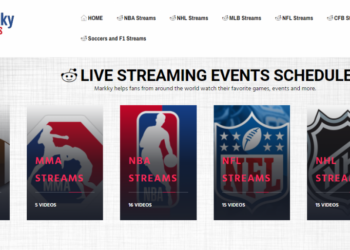In today’s digital age, businesses face fierce competition. Many organizations turn to membership sites to thrive, create revenue streams, and grow customer loyalty. These sites offer customers exclusive access to information and products that meet their needs.
Do you know how to build a membership website? These sites are successful because they cultivate communities around a particular niche or interest. Businesses can foster meaningful relationships with loyal customers by bringing like-minded individuals together in an online community.
However, despite the numerous benefits of running a well-managed membership site, some business owners still need to improve the costs involved. In this post, we’ll explore what ROI can be expected from investing in a well-managed membership site.
Membership Sites Drive Revenue
Membership sites make money by giving people exclusive information that makes them want to pay to get in. Businesses have used subscriptions as a plan for many years because they work well.
These sites have a clear edge over more traditional ways of advertising. They ensure that your content gets noticed among the millions of other posts on social media feeds or in email inboxes. Instead, your content is shown directly to your audience. Using a one-size-fits-all message on an open platform is less effective than sending messages to niche groups of interested people.
An online training provider might post some lessons on YouTube. But they may also only offer material through their learning management systems (LMS). Learners can pay a monthly or one-time fee to use this method. In the same way, a music label would first share new songs only on its streaming service before putting them on other services like Spotify and Apple Music.
Access members also get a number of other perks. These include discounts on courses through LMS systems, exclusive merchandise like t-shirts or mugs on e-commerce stores linked to subscription services, early access passes to events designed for fans, behind-the-scenes looks at projects in progress, and exclusive discounts through partnerships with other businesses.
The LMS platform’s many features and ways to customize it ensure that your members stay engaged and are more likely to keep using the services. In the end, this means that more members stay with your business, which means that your business makes more money. After understanding how much value the platform offers for a low price, many members choose to join for a year.
Membership Sites are More Cost-Effective Than You Think
Making a membership site for a specific group with common interests simplifies expansion. What works and what doesn’t may be simply identified, streamlining the procedure. This means that instead of relying on a list made by outside writers based on SEO analysis, there will be an independent community that creates high-quality content based on what its members want.
Compared to more traditional client acquisition methods like paid advertising, events, or agencies, the costs associated with running an online membership community are substantially lower. Constant adjustments to audience targeting based on performance measurement data require careful budgeting for advertisements. Logistics, travel, and staffing expenses add up for events. More signups will need to be processed because of the increased exposure to these activities. The agency’s professional costs can quickly deplete marketing expenditures.
On the other hand, membership communities are a good long-term bet because they require less initial investment aside from the inevitable updates and maintenance. Furthermore, losing customers directly affects revenue because of the opportunity cost. This is especially true when membership sites and internal networks hosted on a unified platform give exclusive access, resulting in a higher retention rate. In contrast, investing manpower in launching tertiary websites across numerous platforms rarely pays off.
Community Engagement Results In Powerful Brand Advocacy
Putting effort into developing highly effective communities run by like-minded individuals is crucial. Giving these people a say in shaping their individual experiences is a surefire way to get them on board with the overall goal. Customers are given more agency thanks to this strategy’s emphasis on user-generated content, including anything from product ideas and enhancements to educational materials and training programs. This makes the interaction feel more like a conversation than purchasing and consuming goods or reading blogs on an impersonal website.
Members are invested in the group’s success and feel a strong sense of belonging to one another. This results in them being unpaid promoters of your business’s brand.
Promotion through word of mouth is quite efficient. As a result, it’s crucial to put in the time and energy required to build robust community hubs. This will result in your most devoted consumers promoting your business to their friends.
It’s easy to see how membership sites might boost revenue. Customers are given special privileges in private communities, which aids in developing niche markets from which to generate income. Not only does this method cut costs, but it also inspires enthusiastic support for the business. True believers among your clientele will spread your message further and wider over time, helping your digital marketing strategies bear fruit.
Conclusion
It is possible to recreate offline traditions on a broader scale that transcend physical restrictions by investing in forming meaningful online communities. To access information, courses, certifications, and other services that align with their hobbies, warm leads who are already motivated and engaged are willing to pay a monthly charge of $10–$25. These unscheduled groups allow people with similar interests to meet and talk to professionals at any time for a reasonable fee. This method is more cost-effective than a wide variety of unrelated marketing methods because it eliminates the need to respond to competing market demands.






